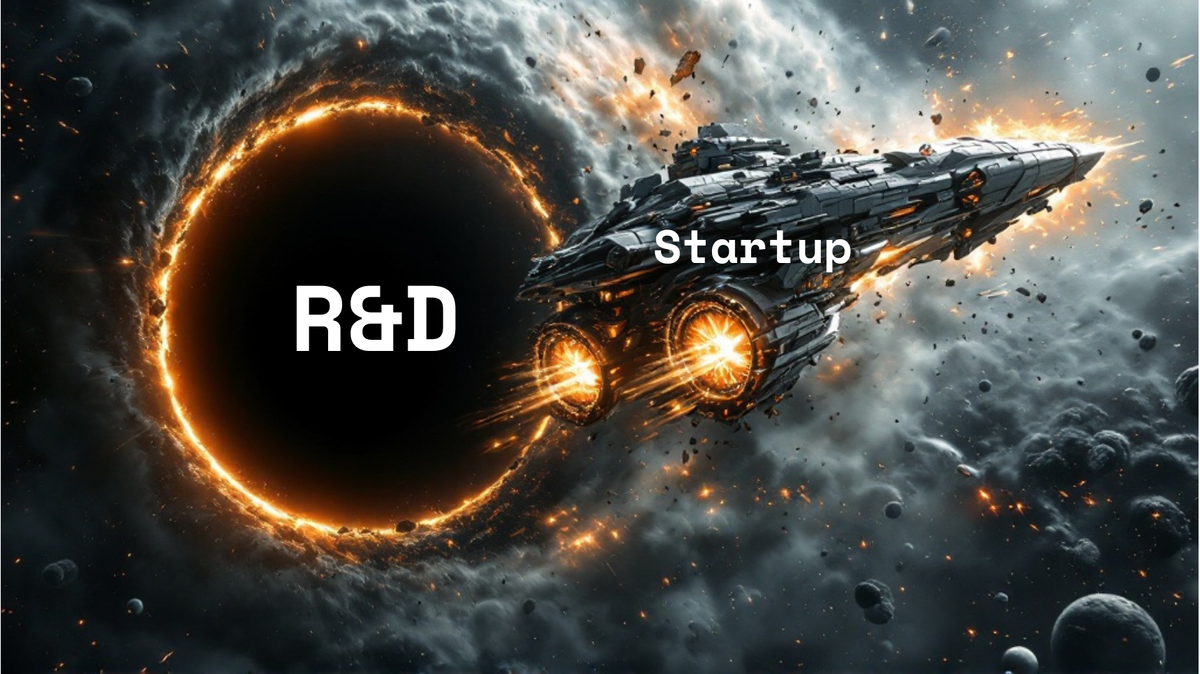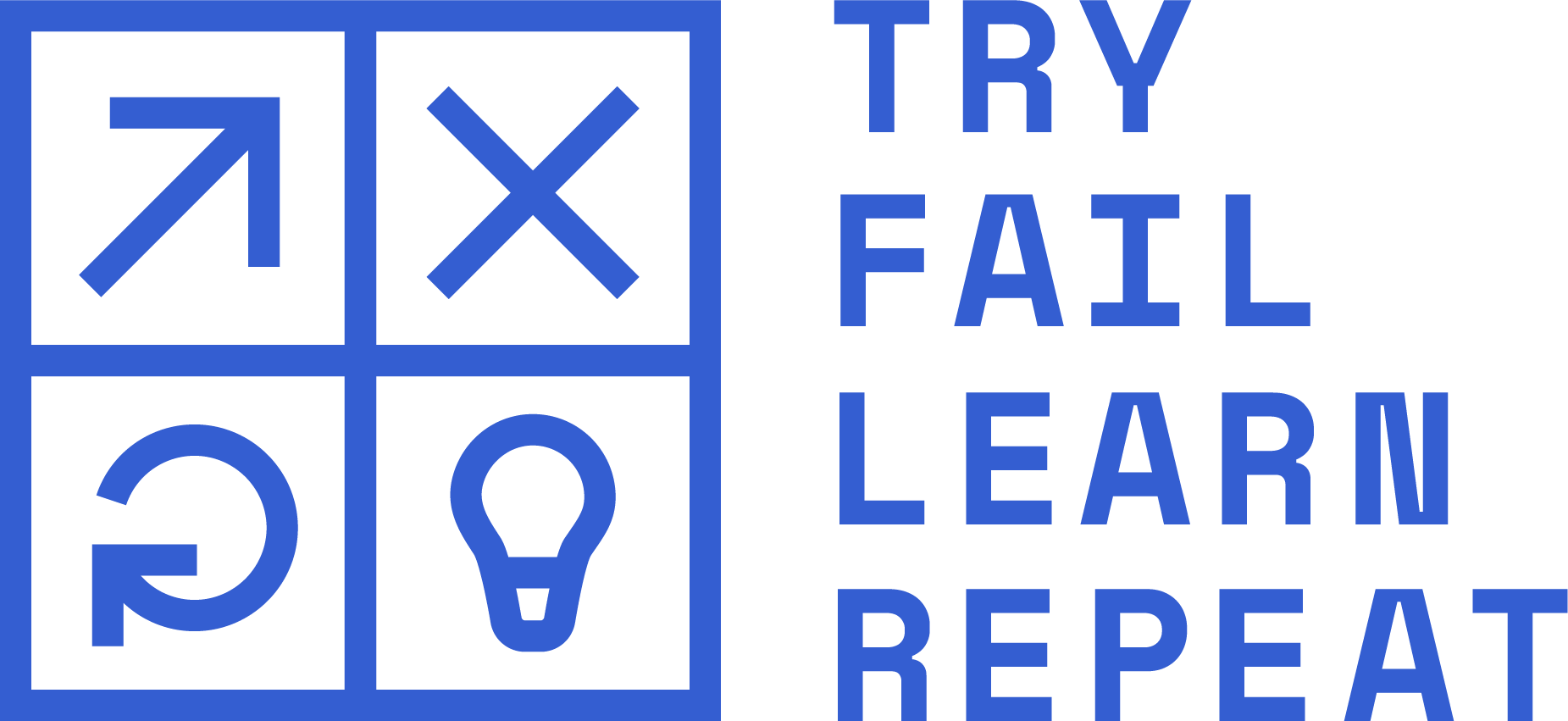The Gravitational Pull of R&D for Science and Engineering Startups

Scientists and engineers who found a company have a great advantage: they understand their product, the technology and the underlying research in depth.
But what is initially a huge advantage can later become a challenge if founders with a research or engineering background (R&D founders) cannot escape the pull of research and development (R&D).
Especially in the first few years of a start-up, every founder wears several hats. You take on tasks that were previously foreign to you or that you may even find annoying. But for R&D founders, you are always drawn back to what you love: refining the product, reaching the next development milestone or designing new features.
The fascination for complexity and the drive to develop innovative solutions are wonderful qualities. But as with everything, it's the dose that counts. An overdose of R&D can not only slow down the founder, but also the team and the entire company.
I speak from my own experience: I have experienced many of the symptoms described below myself. With a little more distance and experience, some things would have been easier, quicker and better.
Symptoms
As an R&D founder, how do you know if you're getting too far down the R&D rabbit hole? Here are some more specific signs that the balance between R&D and other parts of the business is out of balance:
Long discussions in the founding team without a clear outcome: If discussions about product-related topics, such as the development of the next feature or the long-term strategy, regularly degenerate without clear decisions being made, this is a sign that team members are too focused on their own view of R&D. It is especially problematic when these discussions dominate and other important issues, such as market strategy or customer feedback, are pushed to the back burner. These discussions often end without progress, leaving the team frustrated.
Perfectionist planning for the distant future: Many R&D founders tend to work out technical challenges or product ideas in great detail-even if they are only a year or two away. This depth of planning not only wastes valuable time, but is also inefficient because it neglects current priorities and resources. Instead of solving short-term bottlenecks, energy is spent on hypothetical problems that are irrelevant at this point.
Focus on edge cases and what-if scenarios: Anticipating potential challenges and risks is important, but over-focusing on rare or unlikely scenarios distracts from the essentials. Spending more time in R&D meetings on edge cases than on developing robust solutions for the most important use cases or the most likely scenario often indicates a lack of prioritization or alignment within the team.
Internal or External Arrogance: When (individual) R&D founders believe that only they truly understand the product or underlying technology, a dangerous dynamic is created. This behavior often manifests itself in devaluing the opinions of other team members or in domineering behavior in meetings. It becomes even more problematic when this arrogance is openly displayed, as it can severely damage trust and cooperation within the team.
“Sacred Cows” (technology fanaticism): One or more founders may be so attached to a particular technology, method, or approach that no alternatives are allowed. Such "sacred cows" not only stifle innovation, but also cause potentially better or less expensive options to be ignored. But beware! Technology fanaticism can also be a sign of underinvestment in R&D: A fixation can also indicate that not enough attention has been paid to competing technologies.
Micromanaging: Founders who believe they must oversee every aspect of product development often act out of fear of making mistakes or losing quality. However, this behavior not only overwhelms the founders, but also leads to frustration within the team. If a single founder talks a disproportionate amount in meetings, has an answer for every topic but asks no questions, and the team seems reserved or insecure, this is a sign of unhealthy control.
Retreat to the Ivory Tower: Some R&D founders increasingly withdraw from communication with customers, investors, or other external partners because they perceive it as a waste of time. However, this withdrawal from the "outside world" can lead to overlooking important market trends or customer needs.
Resistance to advice: When R&D founders consistently reject outside opinions or refuse to consult advisors or mentors, it shows an unhealthy fixation on their own expertise. While it is important to have a clear picture of your own challenges, a complete rejection of outside perspectives can block innovation and isolate the company.
What can be done to counter the unhealthy pull of R&D?
First of all, every R&D founder should be aware that there can be too much R&D, and that as a founder with a science or engineering background, you can unwittingly get lost in the R&D rabbit hole. So my first piece of advice to you, dear R&D colleagues: Pay attention to the symptoms yourself! And second, take your co-founders seriously if they notice you exhibiting one or more of the above symptoms.
There are also a few things you can do personally to counteract such strong attraction:
Block out time for "public relations": R&D founders should consciously schedule time to be visible outside of their own R&D space. This does not mean they need to become social media stars, but attending investor meetings, pitching to customers, or networking is essential. Even if no such meetings are scheduled for a while, preparing technical presentations, maintaining an R&D newsletter, or writing a white paper can also help shift the focus from internal challenges to the outside world. This block of time should not be negotiable, even with a lot of pressing F&E-ToDos on the plate. It is a way to get out of the R&D bubble and engage with the "outside world" on a regular basis.
Simplicity first - Keep it simple, stupid: Many R&D founders tend to explain all aspects of the product and strategy in excessive detail. But the reality is that customers, investors, and partners are often satisfied with a simplified presentation, and often appreciate it more than depth of detail. It shows that R&D founders can stick to the essentials. Deliberately preparing one's thoughts "for the stupid" helps communicate the message more clearly, makes the company more tangible, and creates more focus internally.
Plan only for the long term: It's easy to get caught up in hypothetical problems or looking for the perfect solution to challenges that may not arise for months or years. Instead, R&D founders should learn to plan in detail only what is actually relevant in the coming months. Future problems should be clearly identified, documented, and then set aside. Good R&D founders have the confidence to solve future problems in the future, not let them block them in the present.
Furthermore, there are some measures that can be taken as a team if an excessive R&D focus is identified:
Organize R&D breakout sessions: This sounds paradoxical at first: If the attraction to R&D is too strong, a focused R&D session should take place within the founding team (and with other team members, if necessary). The goal is to channel this pull correctly and accelerate out of the R&D trap like in a fly-by maneuver. The purpose of such a meeting is not only to create e.g. a concrete F&E roadmap, but even more so to (re)commit the team to a common way of working. Clear expectations should be formulated, e.g. regarding the time allocation of each team member between R&D, management and public relations. The distribution of decision-making authority and the definition of the R&D culture can also be part of such breakout sessions to improve collaboration in the long term. Once this framework is in place, the actual R&D work during the session is much easier and decisions are made faster that everyone is happy with.
Clearly distribute decision-making power: Especially in the early stages of a startup, product development is often seen as a joint task. To avoid endless discussions, however, clear responsibilities should be defined. Who has the expertise or the strongest interest in which topic? That person should ultimately make the decisions and take the responsibility. In a good founding team, the practice in R&D discussions should be to say: "Dear co-founder, you know the most about this aspect, or this aspect is extremely important to you, let's hear all opinions, discuss, but ultimately you make the decision and bear the responsibility".
Build trust with co-founders: Trust is the foundation of any successful collaboration. R&D founders must learn to trust that their co-founders can make the right decisions - even if they have a different opinion. Even if, in hindsight, their own opinions turn out to be correct and mistakes are made: Gaining mutual trust through mutual empowerment, admitting mistakes, and bouncing back together can have a greater positive effect than making the perfect decision the first time.
Empower the team: R&D founders should gradually hand over responsibility for product development to their team and become more involved in management, stakeholder communication, R&D culture, and public relations. This means letting go of control and accepting that things will sometimes work differently than you would have done. While this may slow things down at first, the team grows with the responsibility. In the long run, it becomes more independent and efficient, while the founders can focus on other tasks.
Allow outside opinions: While R&D founders are often experts in their field, there is always someone with more experience or a different perspective in a particular area. External opinions - whether from advisors, mentors or an advisory board - should be seen as a valuable addition. A well-chosen advisory board that not only praises but also gives critical feedback can help uncover blind spots and make better decisions.
Conclusion
An overdose of R&D can derail a startup if founders with research or engineering backgrounds fail to balance development, management and market needs. The good news is that with awareness, structure and openness, these challenges can be overcome.
R&D is a key strength, but it must not become an end in itself. A healthy balance between research, management and external communication is crucial - for the success of the startup and for your personal development as a founder.
By paying attention to symptoms, clearly distributing decisions within the team, and regularly stepping away from the R&D world, you will lay the foundation for sustainable growth - and a more fulfilling life as a founder.




